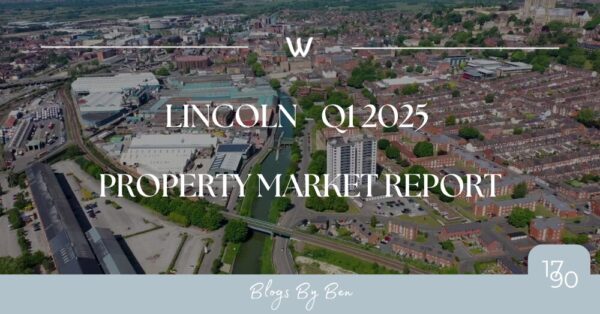Planning an open house can be challenging, but selecting the right day and time is critical to attracting more attendees and ensuring success. This article examines the best days and times for hosting your event, supported by data and expert advice. It will also cover essential factors to consider, creative promotion strategies using social media, and tips for creating a welcoming atmosphere. From refreshments to effective follow-up methods, prepare to make your open house memorable!
1. The Best Day to Host an Open House
Selecting the best day for an Open House is critical to maximising attendance and engaging buyers. Saturdays and Sundays often work best for property viewings. Market trends, local demographics, and buyer availability help create a strategy tailored to the target market.
Understanding buyer habits can improve property viewings and the success of the event.
Weekends generally draw larger crowds because many buyers can only visit properties with work commitments. Mid-afternoon on Saturdays often fits family schedules, making it ideal for family-oriented buyers. Midweek events can focus on specific groups, such as young professionals or retirees, who may prefer quieter viewings.
Estate agents are essential in this planning process. They use local trends and buyer activity insights to choose the best timing, increasing the chances of successful interactions.
2. The Best Time to Host an Open House
The best time for an Open House depends on buyer preferences. Morning, afternoon, and evening each offer different advantages for property viewing and boosting attendance.
Families often prefer morning times to see properties before getting busy, while afternoons attract working professionals and weekend explorers.
Evening showings allow those with traditional work hours to view listings without time pressure. Weather is also essential; clear days usually draw more visitors, and local events can increase or decrease attendance, so checking community calendars is necessary.
Using scheduling tools can help pinpoint the best times for visitor engagement, ensuring that open houses attract the right audience at the best possible times.
3. Factors to Consider When Choosing a Day and Time
When choosing the day and time for an Open House, consider factors such as weather, local school schedules, nearby amenities, and economic conditions that could affect buyer attendance.
If poor weather is expected, turnout may decrease, especially in areas with heavy rain or snow. Aligning with school calendars is essential, too; families may not attend if children have activities or are on holiday.
Highlighting nearby parks, shopping areas, and recreational facilities can attract buyers by showcasing the vibrant community.
Economic factors, such as interest rates or local employment levels, can also influence attendance. Understanding these factors can enhance the success of an Open House.
4. How the Day and Time Can Affect Attendance
The timing of an Open House can greatly influence attendance. Research shows that certain times bring in more visitors, affecting the event’s success.
For example, hosting an Open House at the weekend, particularly on Sunday afternoons, often attracts more potential buyers than on weekdays when people are busy.
Early weekday evenings can also work well, as people may visit after work. To choose the best times, it is essential to look at previous attendance trends and local market conditions.
By tracking Open House metrics such as guest numbers and feedback, estate agents can improve their strategies for future events. For instance, a recent Open House in a busy neighbourhood saw a 30% increase in visitors by adjusting the timing based on past data, demonstrating the benefits of strategic scheduling.
5. Tips for Hosting a Successful Open House
Hosting a successful Open House involves careful planning to engage buyers and showcase the property’s top features through effective staging and kerb appeal.
To attract potential buyers, create a welcoming atmosphere. Focus on the entrance, ensuring it is clean and well-lit, as this sets the mood for the visit.
Clear signage should guide visitors through the space, offering valuable details without overwhelming them. An Open House checklist can help you prepare by including tasks like:
- Refreshing paint
- Decluttering
- Adding pleasant scents
Soft music or the aroma of freshly baked goods can create an emotional connection, leaving a solid impression and encouraging visitors to explore the property’s attractive features.
6. Utilising Social Media to Promote the Open House
Using social media for Open House promotions can greatly improve marketing efforts. It helps estate agents reach a specific audience and connect with interested buyers through local events and community involvement.
Using platforms like Instagram, Facebook, and TikTok, agents can display appealing property visuals, share virtual tours, and accurately advertise upcoming events. Beyond just posting photos, creating engaging content like behind-the-scenes looks and neighbourhood highlights builds connections with the community.
To attract potential buyers, targeted ads can be customised based on demographics, interests, and locations. Participating in local events, such as farmers’ markets or community fairs, can also draw attention to Open Houses.
Monitoring metrics like engagement rates, click-throughs, and attendance offers insights into a campaign’s effectiveness, enabling adjustments to improve future promotions.
7. Creating a Welcoming Atmosphere
Creating a welcoming atmosphere during an Open House is crucial for a positive first impression and effectively showcasing key home features. Staging techniques enhance each room.
Start by decluttering spaces to help potential buyers imagine their belongings in the home. Add inviting décor, such as soft throw cushions and tasteful artwork, to create a comfortable and stylish atmosphere.
Proper lighting can transform a space—use natural light and strategically placed lamps to warm areas and highlight architectural features.
Engage the senses by using subtle fragrances or soft music to evoke feelings of home and warmth. This will help buyers form an emotional connection that can be crucial in their decision-making.
8. Providing Refreshments and Snacks
Offering refreshments and snacks during an Open House improves the visitor experience and helps keep potential buyers around longer, making them feel more comfortable. This approach encourages open conversations, making connecting with the property and the estate agents easier for guests.
Different demographics prefer various types of refreshments, so understanding local tastes can enhance this strategy. For example, in a neighbourhood known for artisanal bakeries, freshly baked goods can appeal to potential buyers and create a sense of community and warmth.
Similarly, offering beverages that reflect local culture, such as craft coffee or traditional tea, can make visitors feel more at home and increase their interest in the property.
9. The Importance of Follow-Up after the Open House
Following up after an Open House is crucial for closing sales in the competitive property market. It is essential for gathering feedback, nurturing leads, and maintaining networking relationships.
By reaching out to potential buyers soon after the event, property professionals can learn what attracted interest and what held buyers back. Strategies like personalised follow-up emails, phone interviews, and surveys can provide helpful feedback. This information helps improve future Open Houses and serves as a basis for generating leads.
Using this data after engaging with attendees can make marketing efforts more targeted, ensuring that leads are developed into actual sales. These practices offer a personalised buying experience, building long-term relationships that benefit both parties.
10. Final Thoughts on Choosing the Best Day and Time for an Open House
Choosing the right day and time for an Open House is essential for boosting attendance and buyer interest. This decision requires careful consideration of several factors.
To maximise success, consider your local market conditions and the preferences of potential buyers. For example, look at regional trends like popular weekend activities or community events to understand peak foot traffic times. It’s also wise to note when competitors hold their events to ensure yours stands out.
By considering these elements, sellers can schedule open houses that better meet prospective buyers’ needs, creating a more engaging and successful experience.



